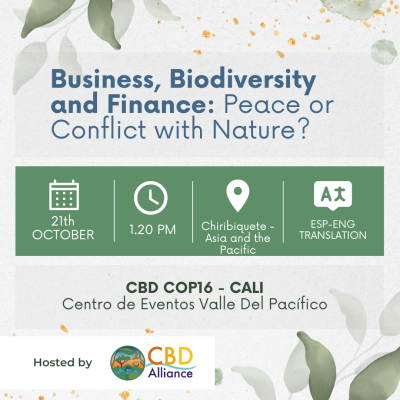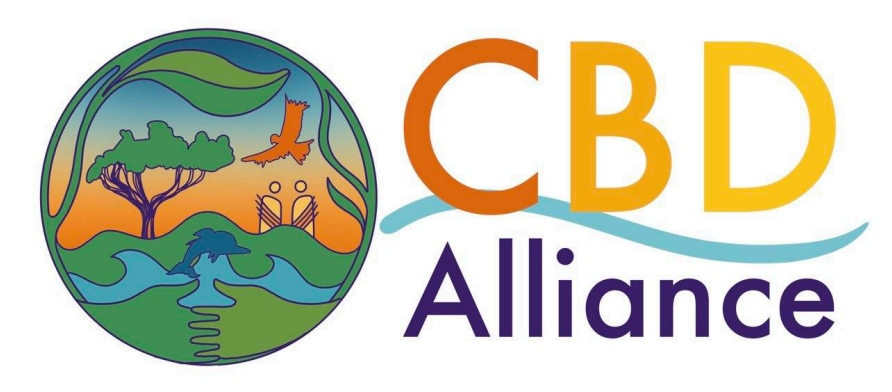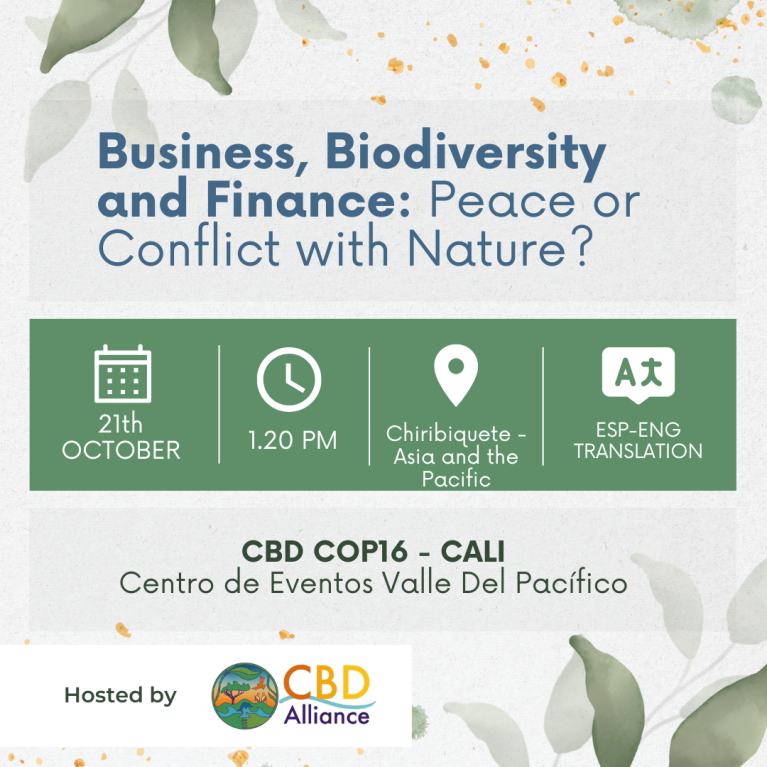Download the full issue as pdf
Biodiversity for Her: an inclusive, rights-based post-2020 GBF with gender-responsive indicators
UNCBD Women’s Caucus
What will make women truly included in biodiversity policy? What does it take to make “biodiversity for her?” At the “Biodiversity for Her” press conference this week, women and human rights advocates spoke about how this policy would look. “A gender-responsive post-2020 global biodiversity is one where human rights is at its core,” according to Human Rights Officer Benjamin Schachter from the UN Office of the High Commissioner on Human Rights. He and other speakers advocate for a human rights-based approach. A stand-alone gender equality target, Target 22, also has to be phrased as “gender-responsive,” and not just “gender-sensitive,” according to Schachter and later affirmed by Alejandra Duarte Guardia from Women4Biodiversity’s policy team. The main difference between gender sensitive and gender responsive is that sensitive is about being aware of gender and doing no harm, whereas gender responsive is about actively responding to the needs of women and men.
The speakers also pointed to the implementation of the Gender Plan of Action with gender-responsive indicators. Advocate of the High Court of Kenya, Cicilia Githaiga highlighted the need to be “specific and deliberate” with the indicators as the National Biodiversity Strategies and Action Plans “need to account for all in society.” Access to funding is also crucial. “If we don’t give opportunities to women for direct funding, the framework won’t be worth much”, Cécile Bibiane Ndjebet, founder and president of the African Women’s Network for Community Management of Forests pointed out. Meanwhile, United Nations Secretary General's Youth Advisory Group on Climate Change, Archana Soreng, highlighted the role of Indigenous Peoples and local communities, as “their promotion of traditional knowledge and practices of local communities are integral to gender-responsive policies.”
Why is a human rights-based approach essential for the new Global Biodiversity Framework?
Diego Cardona, CENSAT Agua Viva / Amigos de la Tierra Colombia
The struggle over the benefits that proceed from the exploitation of biodiversity has negative impacts on territories. Their inhabitants, especially environmental defenders, are displaced, intimidated, criminalized or murdered in attempts to exploit minerals, timber, water or hydrocarbons. More recently, basic human rights have also been violated, for example in unregulated carbon market projects. These rights include free, prior and informed consent, effective participation, housing or food. Actions violating human rights are backed by concepts such as net zero, compensation or nature positive. Their effects include community divisions, deceit (1), results without benefits for communities which the environmental authorities in the Amazon warned about (2), and restrictions on production and livelihood practices such as agriculture which are essential to guarantee the right to food. The latter can cause or increase the risk of physical and/or cultural disappearance: in Colombia the Constitutional Court estimated that 35 indigenous peoples were seriously affected by armed conflict and extractivism, in its Ruling T-025 of 2004 (3). In 2017, the Court increased the number of towns that suffer these effects and confirmed the government's failure to protect them (4).
The Human Rights Council, in its 46th session, established that environmental damage can have disastrous consequences on the quality of life of populations that directly depend on forests, rivers, lakes, wetlands and oceans for food, fuel and medicine, which in turn produces greater inequality and marginalization. All of the above, but mainly the testimonies of the affected peoples and communities themselves, confirm the relationship between biological diversity and fundamental rights for dignified survival in adequate conditions. For this reason, a human rights-based approach in the new GBF in all relevant targets is essential towards compliance and to enable monitoring through clear implementation indicators.
The Four A’s for a successful GBF: Acknowledge, Act, Accountability, ASAP
Iris Dicke, Noa Steiner and Rosalind Helfand, University of Cambridge Conservation Leadership Alumni Network (UCCLAN)
Parties negotiating the Global Biodiversity Framework (GBF) have a once in a decade opportunity to listen and act according to science, specifically IPBES and IPCC, with the aim to safeguard our survival, and truly live in harmony with nature. UCCLAN developed a 4As approach for a successful GBF.
Acknowledge that indirect economic, social, and political drivers are the root causes of biodiversity loss. We need to internalize environmental externalities through taxation, fiscal, and regulatory measures to achieve an economic approach that moves beyond a focus on GDP and applies a systems approach to wellbeing, such as doughnut economics. This can be reflected in Target 14 and its future indicators. Recognizing the interlinkages, feedback loops, and possible trade-offs between and within targets and goals to enhance synergies, will help to prevent future cherry-picking of targets while addressing their interdependencies. This can be acknowledged, for example through reinserting a reference to these elements and the IPBES conceptual framework, as mentioned in the Nairobi text, section D.
Act to show collective crisis leadership (1) in reaching creative and ambitious compromises. To ensure effective implementation of the framework, i, enabling conditions and cross-cutting principles of B Bis must remain strong, with measurable indicators. In addition, leadership for conservation should be enhanced, integrated in capacity-building activities as an enabling condition, and reflected in Section I, H, J, and K. The GBF targets should be implemented in a national and subnational context-specific manner, aligned with increased resources and built on human rights based approaches.
Accountability by tracking implementation while reporting on and systematically removing national barriers to implementation. A simple, time-bound, live and transparent reporting mechanism, in synergy with other conventions, should be developed to allow for dynamic and synergistic reporting.
B: We call upon all parties to do this as soon as possible, starting today. There is no time to lose.
(1) Ngwenya, N., Helfand, R., McNamara, A., Cooper, M., Espinosa, P.A.O.L.A., Flenley, D., Steiner, N., Awoyemi, S., Dicke, I., Musasa, M. and Sandbrook, C., 2020. A call for collective crisis leadership. Oryx, 54(4), pp.431-432.
Wildlife trade causes pandemics and...
sorry let me take my mask off
Paul Todd, Natural Resources Defense Council
The tragic death toll from the COVID-19 pandemic stands at about 6.7 million people worldwide. We’re all wearing masks in the COP15 negotiations and testing daily to make sure we’re not catching or transmitting the deadly pathogen. Though still being investigated, COVID-19 likely emerged from a novel pathogen spillover event in a market where different wild animals were being sold alongside each other. That spillover event could have happened just as easily along other points in the wildlife trade chain. Direct exploitation of wildlife, which includes wildlife trade, is also the second leading driver of terrestrial species loss (first for marine species) according to the 2019 IPBES Global Assessment Report. A Post-2020 Global Biodiversity Framework (GBF) target to eliminate the threat to both biodiversity and human health posed by the wildlife trade by 2030 is a no-brainer.
Except that, inexplicably, it’s not. Target 5, which at one point simply and elegantly set the ambitious objective to end wildlife exploitation, use, and trade that is illegal, unsustainable, or that poses a risk of pathogen spillover, is a mess. Like so many other goals and targets that at one time, long ago now, simply sought to reduce or eliminate the five direct drivers of the biodiversity crisis and their associated indirect drivers, Target 5 has fallen victim to fears about what the target doesn’t say.
Some Parties seem to think it’s a clandestine effort to ban the sustainable use of wild species. Others appear to be conflating the direct exploitation driver of biodiversity loss with important issues related to illegal access and use of genetic resources covered elsewhere. Still others want to redirect the whole conversation about biodiversity and health to Bbis (also very important). Only a few brave Parties seem to get it and have insisted on the reinsertion of specific language to prevent pathogen spillover from wildlife trade in Target 5. As Ministers begin their high-level talks, hopefully they get it too and will keep this language intact as they test up, mask up, and join the fight to stop zoonotic disease pandemics before they start. Nobody wants to wear a mask at COP16.


